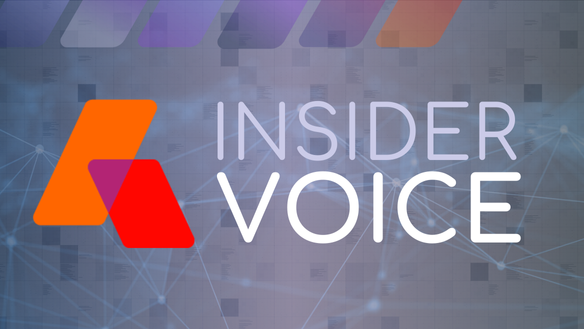The Evolving World of Digital Advertising and its Impact on Publishers

In the world of digital publishing, the last decade has seen a tectonic shift in advertising operations. From the introduction of cutting-edge technologies to the ever-evolving regulatory landscape and the continually rising standards set by advertisers, digital publishers are navigating through a dynamic and transformative era.
At Operative, we closely collaborate with our partners, ensuring they are well-prepared to navigate the ever-shifting terrain of the digital publishing world. One thing we’ve learned is that publishers need the foundational tools to manage through change. Nobody wants to replace their tech stack every few years — instead, it has to be built to last, built to evolve, and built to scale with the business.

In this article, we’ll look at some of the recent and future transformational changes impacting digital publishers. Let’s start by diving into some of the recent transformations in the digital publishing world that have left a lasting impact:
1. The Ascendance of Programmatic Advertising
Programmatic is everywhere! Programmatic advertising provides publishers with a lifeline to optimize their ad inventory. Real-time auctions ensure maximum returns, enabling publishers to effectively occupy ad slots and enjoy a surge in revenues.
Most digital publishers have navigated potential downsides of programmatic fairly well (ad quality, price erosion, etc.). To mitigate these downsides, digital publishers strike a balance between programmatic and direct, carefully selecting their programmatic partners, implementing ad quality controls, and prioritizing user experience.
2. The Reign of Mobile Advertising
The meteoric rise of mobile devices into the fabric of everyday life has triggered exponential growth in mobile advertising. Advertisers have recalibrated their strategies to meet the expectations of a mobile-centric audience.
Given the omnipresence of mobile devices, adopting a mobile-first approach is non-negotiable for digital publishers. Ensuring mobile-friendliness for websites and content is crucial. This shift towards mobile advertising has opened up new opportunities for publishers to monetize mobile traffic.
3. The Emergence of Video Advertising
Video advertising has experienced a renaissance, largely owing to platforms such as YouTube, TikTok, and Instagram. Advertisers have aggressively invested in video ads, recognizing their potential for highly engaging communication.
Publishers who seamlessly incorporate video content into their platforms position themselves to tap into the surging demand for video advertising. This can lead to higher CPMs (as shown in Operative’s Benchmarking Report) and a significant revenue boost. Collaborations with brands for sponsored video content also present lucrative prospects.
4. Stringent Data Privacy Regulations
Regulations governing data privacy, such as GDPR and CCPA, have become considerably more rigorous. These regulations place stringent restrictions on how advertisers and publishers collect, store, and use user data.
Adapting to this evolving regulatory landscape is imperative for publishers. They must ensure compliance with data privacy laws, demonstrate transparency in data collection practices, and empower users with more control over their data. This shift has led to a more ethical and responsible approach to data usage.
The Increasing Pace of Complexity
While these represent just a fraction of the recent developments impacting digital publishers, the future of online advertising promises to introduce several major complexities. Publishers must remain adaptable, prioritize user privacy, and diversify their revenue streams to meet evolving expectations and thrive in the ever-shifting landscape of the digital advertising universe.
In the short term the publisher’s pitch-to-pay workflows are going to be remade with AI, enabling faster & more impactful planning, operations, and invoicing processes.
A few of today’s trends that are starting to have a major impact:
1. AI and Machine Learning
This is the big one, and will change how digital publishers operate in a major way. Artificial intelligence and machine learning are slated to take center stage in the publishing world, automating and optimizing ad sales, targeting, campaign management, and content recommendation, promising enhanced efficiency and effectiveness. In the short term the publisher’s pitch-to-pay workflows are going to be remade with AI, enabling faster & more impactful planning, operations, and invoicing processes. If you want to learn more, talk with your Operative rep about some of the exciting capabilities we’re already working on.
2. The Surge in E-Commerce and Shoppable Ads
The e-commerce sector has experienced an unprecedented boom, further accelerated by the circumstances of the COVID-19 pandemic. The advent of shoppable ads, enabling users to make direct purchases from advertisements, has streamlined the sales funnel. We’re seeing more and more publishers strike partnerships with retail media networks, helping capitalize on first party data (for better targeting) and delivering more powerful attribution data back to advertisers.
Digital publishers are ideally positioned to capitalize on the e-commerce surge by collaborating with brands and retail media partners to showcase shoppable ads. This collaboration can add a lucrative dimension to their revenue streams.
3. Personalization and User Privacy
The future of online advertising is poised to emphasize personalization, but it needs to navigate the waters of user privacy concerns, striking a delicate balance between personalization and data protection. Publishers will have to prioritize user privacy and explore innovative ways to deliver personalized, relevant content and ads while safeguarding user data.
Self-serve advertising management platforms streamline the overall business relationship between advertisers and publishers.
4. Voice and Conversational Marketing
Voice-activated devices and digital assistants are steering the ship towards voice and conversational marketing. Publishers will need to prepare for this shift by optimizing content for voice search and considering voice-based ad formats.
5. Cross-Platform Advertising
The cross-platform advertising approach will enable advertisers to seamlessly reach users across diverse devices and channels. Publishers who can offer integrated marketing strategies will benefit from the growing demand for their advertising inventory. Operative is already there, with AOS as our flagship product to connect platforms, unify data, and drive converged advertising workflows.
6. Self-Serve Ad Management Platforms
We’ve already begun to see a rise in the number of media companies offering self-serve advertising management platforms to their customers. These platforms streamline the overall business relationship between advertisers and publishers. At Operative, we’re proud to partner closely with DanAds to bring the power of self-service to our customers, including tools for automated media planning, billing, reconciliation and proposal automation. Through their self-serve platforms, DanAds connects advertisers and publishers in an automated ecosystem, eliminating manual processes and unlocking the full potential of user data monetization.
We’ve seen a lot of changes over the past 10 years. But like everything else in the world, the pace of change in advertising is moving faster and faster. Those changes introduce unforseen complexity into the AdOps world, which means publishers (and their technology platforms) have to remain adaptable. Publishers who plan for flexibility, prioritize user privacy, and diversify their revenue streams will be well-positioned to thrive in the ever-shifting terrain of the digital advertising universe.



